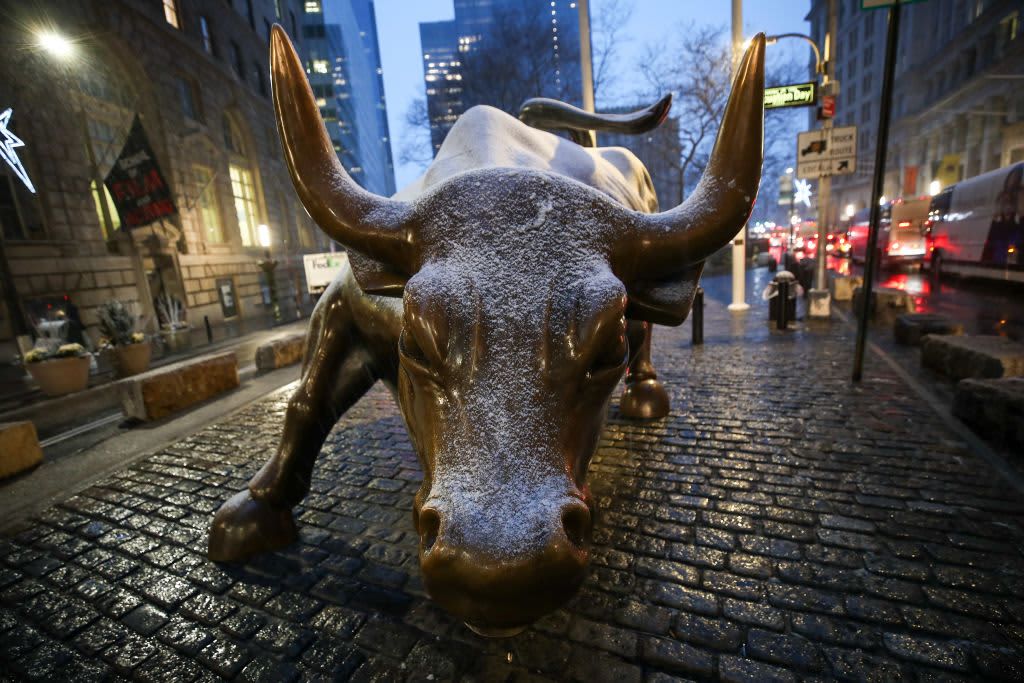Even the bulls are exhausted.
The S&P 500 is up 14 of the last 16 days. It’s moved over 300 points (about 7%) since Oct. 13.
Improved revenues, strong earnings due to companies’ move to cut costs (which allows more profit to flow to the bottom line), seasonal strength and the Federal Reserve’s quantitative easing tailwind have all combined to create a market juggernaut.
When will it end, and what should we look for as a sign of market exhaustion?
When will it stop? It depends on who you ask, but there are already warning signs.
Technicals are stretched to the limit. On a short-term basis, the S&P 500 is as overbought as it has been since just before the outbreak of Covid. “It takes a lot of energy to keep the markets advancing like this,” veteran market watcher Tom McClellan, editor of the McClellan Market Report, told me. “To have a lot of consecutive up or down days exhausts everyone, because the bulls can’t keep it up. They just run out of juice.”
Loading chart…
McClellan said he is watching for three potential divergences that will signal the rally is exhausted:
1) a continuing move up in the markets when the CBOE Volatility Index (VIX) starts rising, indicating traders believe the trend is going to slow or reverse and are now buying protection against that;
2) a continuing move up in the market, but momentum gauges like the Relative Strength Indicator (RSI) start going down. The RSI measures momentum over a two-week period. If that starts dropping while the market keeps rising, it’s a sign that momentum is slowing;
3) a divergence between the S&P and the Advance/Decline line. When the S&P keeps advancing, but the number of stocks advance starts to decline, it is a sign the rally is relying on fewer leaders, a classic red flag.
One thing’s for sure: It can’t keep going up. “We have decades of stock market behavior to look at,” McClellan told me. “There is a maximum upward velocity the market has. You can keep going up, but at a slower rate, and that’s a sign you are setting up for a correction.”
Earnings growth estimates are slowing down. Analysts are not raising earnings estimates like they did earlier in the year. The market’s relentless advance is largely predicated on earnings estimates continually rising. That has happened for the first three quarters of the year, but that momentum is now slowing. “Earnings season has not been as great as 2Q 2021 and positive EPS estimate revision momentum has stalled out,” Nick Raich from The Earnings Scout said in a note to clients.
Indeed, fourth-quarter earnings estimates peaked several weeks ago, with analysts expecting a gain of 22.8%. It now stands at 22.0%.
“The market is pricing in a perfect scenario,” Raich told me. “It believes supply chain problems will be resolved in the next quarter or so, that inflation will be transitory, and demand will continue to remain strong.”
“That might play out, but it leaves the market with very little room for error,” he added.
Ten-year yield dropping. If the economy is doing so well, why is the yield curve flattening? Why is two-year Treasury yields mostly rising in the past few weeks on expectations the Fed may hike rates next year, but the 10-year yield has been mostly down?
“If bond yields remain low, that is not a good sign for stocks,” Peter Tchir, head of macro strategy at Academy Securities, told me. “It’s a sign that the bond market is pricing in lower growth. But I still believe the economy is doing well, and I do believe 10-year yields will start going back up. If they don’t start going up, I think that is a concern.”
The Fed cutting back on quantitative easing. The market has gotten used to $120 billion a month of additional liquidity coming into the economy from the Federal Reserve’s quantitative easing program, much of which has found its way into the stock market.
What will happen next?
“It’s like when you stop fertilizing your roses,” McClellan said. “When you stop fertilizing them, they don’t do as well.”
McClellan said the role of money — liquidity — in helping prop up the market has been under-appreciated.
“On a market-wide basis, the most important thing for investors is, ‘How much money is out there?’ and ‘How much does that money want to be invested in stocks?'” McClellan told me.
“In the last decade a lot of that money has found its way into the market.”
A lesson in behavioral economics
Long-time investors, noting that daily traders seem bored by the slow melt-up in the markets, have noted that market participants would feel very different if stocks were dropping.
“If the markets were going in the opposite direction, everyone would be a lot more alert,” Tchir told me. “If instead of being up seven or 8% in a few weeks, we were down seven or 8%, everyone would be talking about the coming market correction. All hell would be breaking loose. There would be a lot of fear and panic.”
It’s true: It’s an old trope from behavioral economics. Investors feel the pain of a loss far more than the pleasure from a gain.
That is exactly the kind of complacency that McClellan sees now.
“Generals are always fighting the last battle, but if there is no battle what are we worried about?” he said. “Let’s just buy calls and be happy all the time. And then the earthquake comes, and people remember they have to study their geology.”
